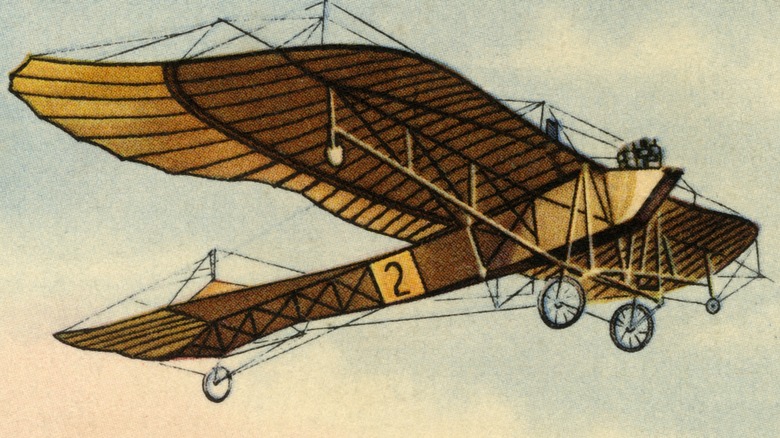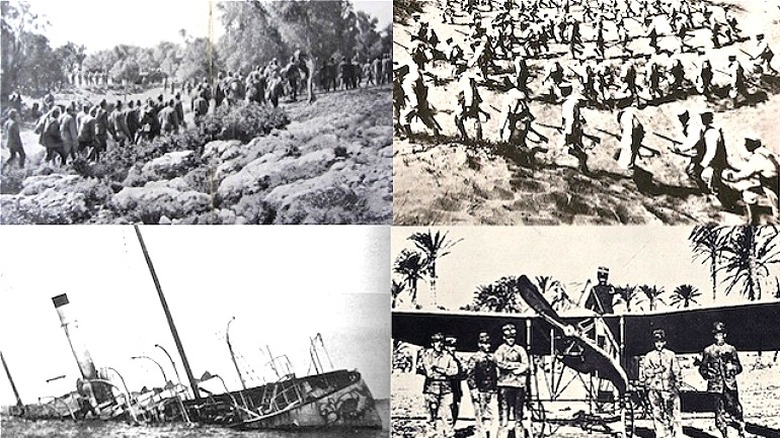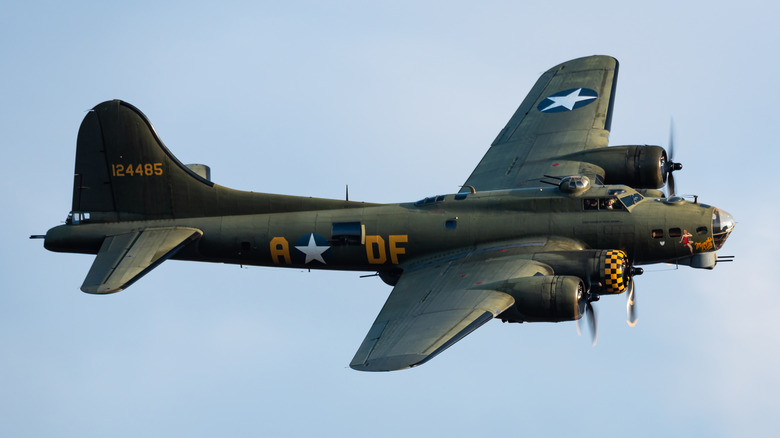The World's First Aerial Bomb Was Dropped By A Rogue Pilot In 1911
On November 1, 1911, Lieutenant Giulio Gavotti was an Italian Air Fleet pilot involved in the invasion of what is now Libya, then part of the crumbling Ottoman Empire. Lieutenant Gavotti reached down and carefully slipped out a small round bomb from a padded leather satchel and set it on his lap. He then leaned out of his Taube monoplane that was 2,000 feet in the air and let the bomb drop, according to ABC News. "I can see it falling through the sky for a couple of seconds and then it disappears," he wrote to his father, per the BBC. "And after a little while, I can see a small dark cloud in the middle of the encampment."
When Gavotti tossed that round, grenade-like Cipelli bomb (per "The Influence of Air Power Upon History," posted at the Internet Archive) from over the side of his plane, he inaugurated a new and deadly form of warfare that would kill millions upon millions during the 20th century and beyond. Gavotti would eventually release three more of the explosives on the Ottoman Turks during history's first bombing run on the outskirts of Tripoli. He hadn't even been given the order to do it, per the BBC.
The Italo-Turkish War saw many firsts in air warfare
Even before Lieutenant Gavotti became the first aerial bomber, the Italo-Turkish War that started in September 1911 and ended a little over a year later saw many firsts, including the use of airplanes just eight years after the Wright Brothers took their first tentative flight at Kitty Hawk, North Carolina, according to the BBC. Other firsts included the use of planes for artillery spotting, the dropping of propaganda leaflets, night bombing, and reconnaissance missions, per "The Influence of Air Power Upon History."
In fact, Gavotti was supposed to be on a reconnaissance mission when he launched his bombing attack that day. The Italian military had purchased the bombs but not yet given any orders for their use, per the BBC. "It is very strange that none of us have been told about this, and that we haven't received any instruction from our superiors," he wrote to his father. "So we are taking the bombs on board with the greatest precaution."
Gavotti's bombing run included two different targets: the small town of Ain Zara and the nearby oasis of Jagiura. The explosives didn't injure anyone, but his commanders and the press back home hailed it as a success, per Weapons and Warfare.
Aerial bombing takes on a new role in warfare
Following Lieutenant Gavotti's initial bombing run, many more followed, including one that hit a Turkish field hospital, sparking condemnation from the international press, according to the London Review of Books. The Italians, on the other hand, were thrilled with the demoralizing effect it had on the enemy, per NPR. It's hard to determine just how large a part aerial warfare played in the Italian victory during the Italo-Turkish War, but it laid the groundwork for the military's buildup of airplanes that would see extensive use beginning three years later in World War I, per Weapons and Warfare. Italy would retain control of Libya until 1943, per About History.
In the coming years, aerial bombardment would come to play an even more important and deadly role in warfare, including the Nazi bombing of the Spanish town of Guernica during the Spanish Civil War in 1937; the Nazi bombing raids over England in 1940-1941, known as the London Blitz; the Allied bombing of Dresden in Germany in 1945; and the U.S. attacks on Hiroshima and Nagasaki, in which the first nuclear bombs were used.


